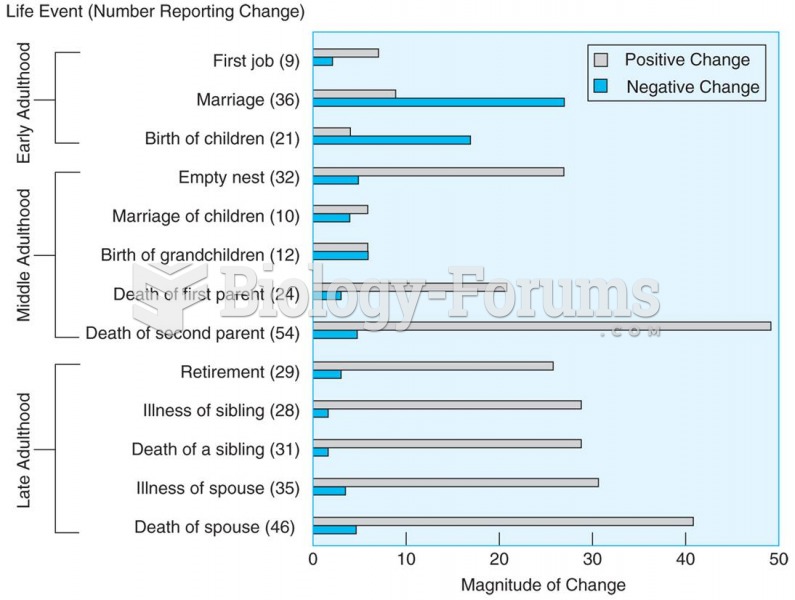|
|
|
Asthma-like symptoms were first recorded about 3,500 years ago in Egypt. The first manuscript specifically written about asthma was in the year 1190, describing a condition characterized by sudden breathlessness. The treatments listed in this manuscript include chicken soup, herbs, and sexual abstinence.
The heart is located in the center of the chest, with part of it tipped slightly so that it taps against the left side of the chest.
Cytomegalovirus affects nearly the same amount of newborns every year as Down syndrome.
The Centers for Disease Control and Prevention (CDC) was originally known as the Communicable Disease Center, which was formed to fight malaria. It was originally headquartered in Atlanta, Georgia, since the Southern states faced the worst threat from malaria.
According to the FDA, adverse drug events harmed or killed approximately 1,200,000 people in the United States in the year 2015.







